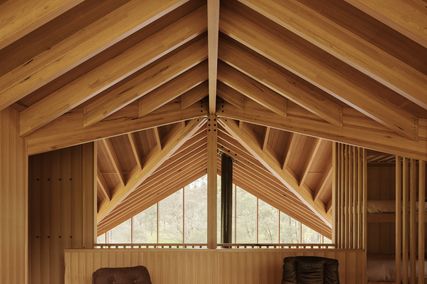As designers, we tend to fill in all the blank space within the scope of a project. But the way in which the lines we draw on a page interact with the existing conditions and environment can fall outside our realm of control. By taking a conscious step back, not overdesigning and allowing space for collaboration, we open the door to outcomes that are beyond the ability of humans alone.
The concept of “nudge stewardship” is inspired by a behavioural economics concept known as “nudge theory.” Applied to landscapes, it is about supporting Country to thrive and to be what it wants to be. We have a greater influence over the health of Country when we collaborate with it towards a common good, than when we try to work against it. Management implies taking control whereas stewardship involves taking care . Effective custodians of the environment comprehend that humans are not in control, as demonstrated by recent devastating floods and fires. This can be an uncomfortable concept for those who believe that humans are above nature.
Humans can “nudge” nature by, for example, reintroducing snags in and around water bodies to provide shelter for crustaceans, fish, and birds.
Image: Siân Hromek
While we may not be in control, we have a direct influence and an opportunity to act as key collaborators who support natural systems to thrive. Collaboration is fundamental to complex life forms. Plants collaborate with chloroplasts to convert sunlight into energy. Fossils demonstrate how plants and fungi collaborate by exchanging carbohydrates for minerals and nutrients. 1 In land restoration, Country does the majority of the work. Our role is to collaborate and support the transition to recovery within landscapes and ecosystems. By understanding the direction and momentum of Country, and actively looking after it through scaled micro-disturbances, we can nudge systems towards recovery and health.
This way of designing has been applied to a 300-acre private property in northern New South Wales, with the aim of creating a conservation reserve. Over the past 20 years, after decades of being denuded by logging and cow farming, the land has been nudged towards a biodiverse ecosystem. This has been achieved by a group of about 15 local people with a range of skill sets and has involved enhancing pockets of remnant vegetation, planting species approp-riate to the local landscape and encouraging “volunteer” native species to spread. A series of large ephemeral ponds was installed to replace drained wetland niches for wading migratory birds. Large wooden snags placed in and around the water bodies provide habitat for freshwater crustaceans, a nursery for fish and a safe perch for birds. This type of human nudge allows nature to thrive without overdesigning or trying to take total control.
Replacing dominion, nudge stewardship involves a genuine desire to collaborate with Country. Making decisions and taking action that is informed by ongoing observations, interspersed with periods of quiet inaction and non-disturbance, allows Country to do its part of the work.
“Do not overdesign” is one 14 principles of the “What can non-Indigenous architects do” dossier. See all the principles in this dossier.


















